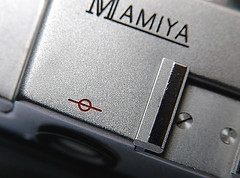Difference between revisions of "Film plane"
m |
(Added one photograph) |
||
| Line 6: | Line 6: | ||
| + | {{Flickr_image | ||
| + | |image_source= https://www.flickr.com/photos/90900361@N08/48965983541/in/pool-camerawiki | ||
| + | |image= https://live.staticflickr.com/65535/48965983541_1cd7fe8fc0_m.jpg | ||
| + | |image_align= left | ||
| + | |image_text= Film plane marking on a Casca II | ||
| + | |image_by= Geoff Harrisson | ||
| + | |image_rights= wp | ||
| + | }} | ||
{{Flickr_image | {{Flickr_image | ||
|image_source= http://www.flickr.com/photos/90900361@N08/8646554795/in/pool-camerawiki | |image_source= http://www.flickr.com/photos/90900361@N08/8646554795/in/pool-camerawiki | ||
|image= http://farm9.staticflickr.com/8544/8646554795_10b6f38a46_m.jpg | |image= http://farm9.staticflickr.com/8544/8646554795_10b6f38a46_m.jpg | ||
| − | |image_align= | + | |image_align= |
|image_text= Film plane marked with a red symbol | |image_text= Film plane marked with a red symbol | ||
|image_by= Geoff Harrisson | |image_by= Geoff Harrisson | ||
Revision as of 04:40, 27 October 2019
This article is a stub. You can help Camera-wiki.org by expanding it.
The film plane is the plane in which the film (or the electronic sensor) is placed. In a properly-designed camera, this is synonymous with the focal plane, onto which light entering a lens is focused. In many cameras with simple lenses, the film plane is not a plane (i.e. not flat), but curved, to compensate for inadequacies of the lens, and in swing-lens panorama cameras, curved to follow the movement of the lens.
Many cameras have their film plane marked on the top plate, as the close-focussing distance is always measured from the film plane, not from the front of the lens.

|
| Film plane marking on a Casca II image by Geoff Harrisson (Image rights) |

|
| Film plane marked with a red symbol image by Geoff Harrisson (Image rights) |
Glossary Terms